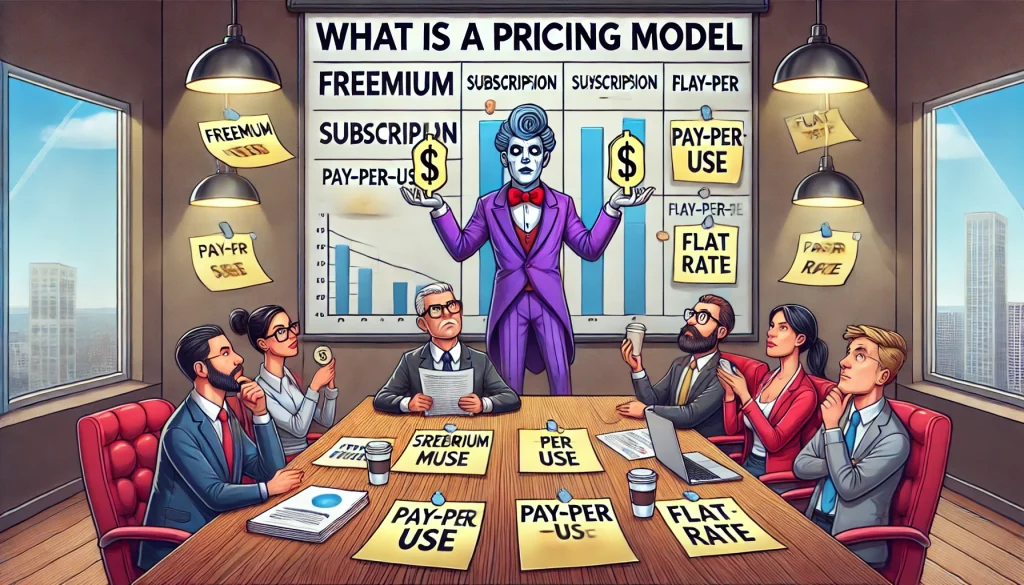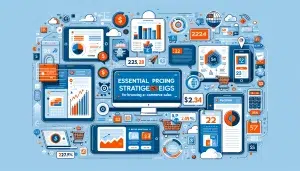
Table of Contents:
- Introduction
- Definition of a Pricing Model
- Types of Pricing Models
- Importance of Choosing the Right Pricing Model
- How to Select the Best Pricing Model for Your Business
- Common Challenges in Implementing Pricing Models
- FAQs
- Useful Links
- Conclusion
Definition of a Pricing Model
A pricing model is a method or structure used by businesses to set prices for their products or services. It takes into account various factors such as production costs, market demand, competitor pricing, and perceived value to customers.
The goal of a pricing model is to find the optimal price point that maximizes profits while remaining attractive to potential buyers.
Introduction
A pricing model is a strategic framework that businesses use to determine the cost of their products or services. It’s a crucial element of any company’s marketing and financial strategy, directly impacting revenue, customer perception, and market positioning.
The right pricing model can drive growth, while the wrong one can lead to missed opportunities and lost profits.
Types of Pricing Models
There are several common pricing models used across different industries:
- Cost-plus pricing
- Value-based pricing
- Competitive pricing
- Dynamic pricing
- Subscription-based pricing
- Freemium model
- Pay-what-you-want pricing
Let’s explore each of these in more detail:
1. Cost-plus Pricing
- Calculates the cost of producing a product or service
- Adds a markup percentage to determine the selling price
- Simple to implement but may not account for market conditions
2. Value-based Pricing
- Sets prices based on the perceived value to the customer
- Requires understanding of customer needs and willingness to pay
- Can lead to higher profit margins if implemented correctly
3. Competitive Pricing
- Prices are set in relation to competitors’ prices
- Can be at, below, or above market rates
- Requires constant monitoring of market conditions
4. Dynamic Pricing
- Adjusts prices in real-time based on demand and other factors
- Common in industries like hospitality and transportation
- Can maximize revenue but may lead to customer confusion
5. Subscription-based Pricing
- Charges a recurring fee for ongoing access to a product or service
- Provides predictable revenue streams
- Popular in software and content industries
6. Freemium Model
- Offers a basic version for free with premium features at a cost
- Attracts users with free offering and converts some to paid customers
- Effective for digital products and services
7. Pay-what-you-want Pricing
- Allows customers to choose their own price
- Can build goodwill and attract price-sensitive customers
- Works best for products with low marginal costs
Importance of Choosing the Right Pricing Model
Selecting an appropriate pricing model is critical for several reasons:
- Profitability: The right model ensures that your prices cover costs and generate desired profits.
- Market positioning: Your pricing strategy influences how customers perceive your brand and products.
- Competitiveness: An effective model helps you stay competitive in your market.
- Customer attraction and retention: Pricing affects customer acquisition and loyalty.
- Scalability: A well-chosen model supports business growth and expansion.
How to Select the Best Pricing Model for Your Business
To choose the most suitable pricing model:
- Understand your costs
- Research your target market
- Analyze competitor pricing
- Define your value proposition
- Consider your business goals
- Test different models
- Gather and analyze customer feedback
Common Challenges in Implementing Pricing Models
Businesses often face several hurdles when implementing pricing models:
- Balancing profitability with customer satisfaction
- Adapting to market changes and competition
- Communicating value to justify prices
- Managing price sensitivity among customers
- Dealing with pricing errors and adjustments
FAQs
Q: What is the most common pricing model?
A: Cost-plus pricing is one of the most common models due to its simplicity, but value-based pricing is becoming increasingly popular.
Q: Can I use multiple pricing models for different products?
A: Yes, many businesses use different pricing models for various product lines or customer segments.
Q: How often should I review my pricing model?
A: It’s recommended to review your pricing strategy at least annually or whenever significant market changes occur.
Q: Is the lowest price always the best strategy?
A: Not necessarily. While low prices can attract customers, they may also reduce perceived value and profitability.
Q: How do I know if my pricing model is working?
A: Monitor key metrics such as sales volume, revenue, customer acquisition cost, and customer lifetime value to assess the effectiveness of your pricing model.
Useful Links
- Pricing Strategies: How to Price a Product
- The Psychology of Pricing: A Gigantic List of Strategies
- Harvard Business Review: A Quick Guide to Value-Based Pricing
- The Ultimate Guide to Pricing Strategy
Conclusion
A pricing model is a fundamental aspect of any business strategy, playing a crucial role in determining a company’s success in the marketplace. By understanding the various types of pricing models available and their applications, businesses can make informed decisions that align with their goals, target audience, and market positioning.
Choosing the right pricing model requires careful consideration of multiple factors, including production costs, customer perceived value, market competition, and business objectives. It’s not a one-time decision but an ongoing process that requires regular review and adjustment to ensure continued effectiveness.
While implementing a pricing model can present challenges, the benefits of a well-crafted pricing strategy are significant. It can drive profitability, enhance market competitiveness, and foster customer loyalty. By investing time and resources into developing and refining your pricing model, you set your business up for long-term success and growth.
Remember, there’s no one-size-fits-all solution when it comes to pricing models. What works for one business may not work for another. The key is to thoroughly understand your unique business context, remain flexible, and be willing to adapt your approach as market conditions and customer needs evolve.
By leveraging the insights and strategies discussed in this guide, you’ll be well-equipped to navigate the complex world of pricing models and make decisions that drive your business forward. Whether you’re a startup founder, a small business owner, or part of a larger corporation, mastering the art and science of pricing is an invaluable skill that will contribute significantly to your business’s success.




